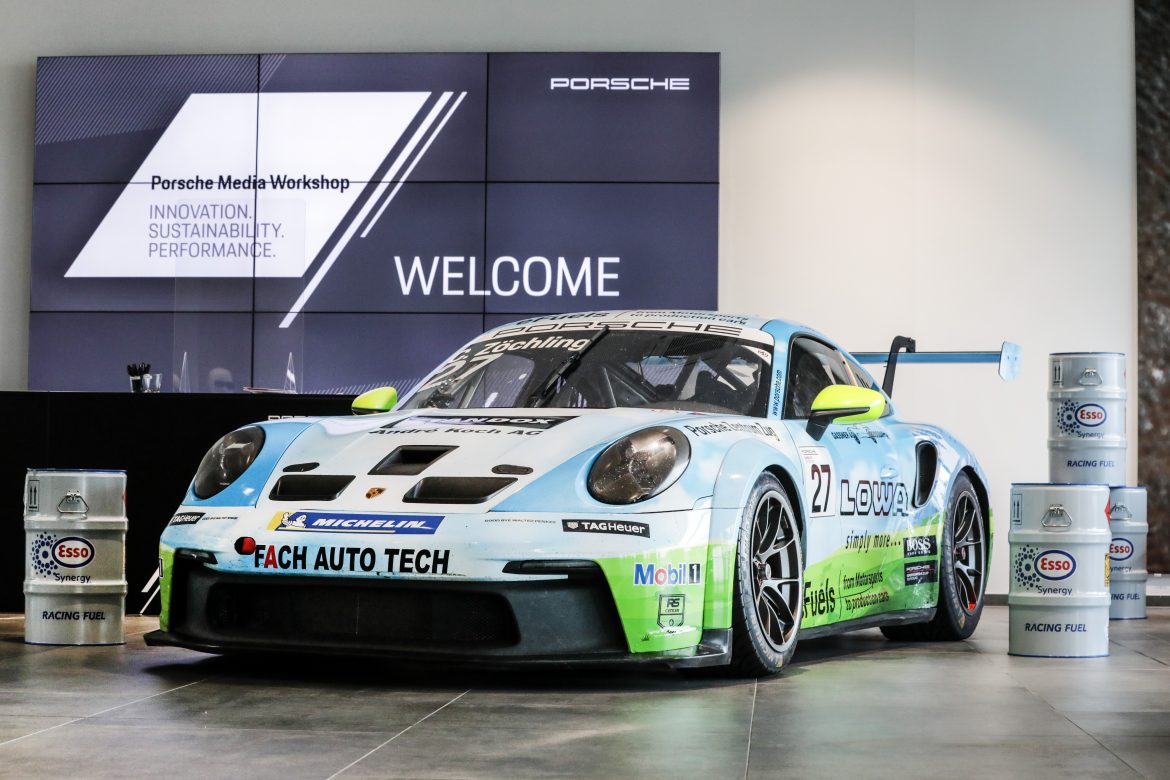Electric vehicles have seen more than ever push in the last couple of years. While EVs are touted to be the torch bearer on the path towards cleaner and greener mobility, critics turn up with arguments suggesting otherwise, which are often valid and make us question whether EVs are actually the future. Many carmakers are betting high on alternative fuels or propulsion systems to reach the goal of carbon neutrality. In this story, let’s find out the alternative fuels that are in development, promising zero or net-zero carbon emissions.
Hydrogen
Hydrogen fuel has the potential to become a very popular and accessible sustainable fuel in the future. Automakers are investing heavily in the development of hydrogen-driven vehicles and there are production examples using hydrogen as a fuel, take the Toyota Mirai for instance. Thanks to the Mirai that’s been on sale for over 8 years now, hydrogen fuel cell vehicles have started to gain acceptance, albeit to a small segment of car buyers. Alongside hydrogen fuel cells, carmakers are also betting on hydrogen combustion engines.
Hydrogen combustion engines follow the principles of the gasoline-powered internal combustion engine. Hydrogen fuel cell, on the other hand, is far more complex, incorporating a battery pack, large hydrogen fuel tanks, electric motors and of course a fuel cell. The large number of components in hydrogen fuel cell vehicles increases their manufacturing cost, thus limiting their reach. Hence, while FCEV could pay dividends in the premium end of the automatic landscape, hydrogen combustion seems a more promising bet to cover a larger landscape and contribute to the goal of carbon neutrality.
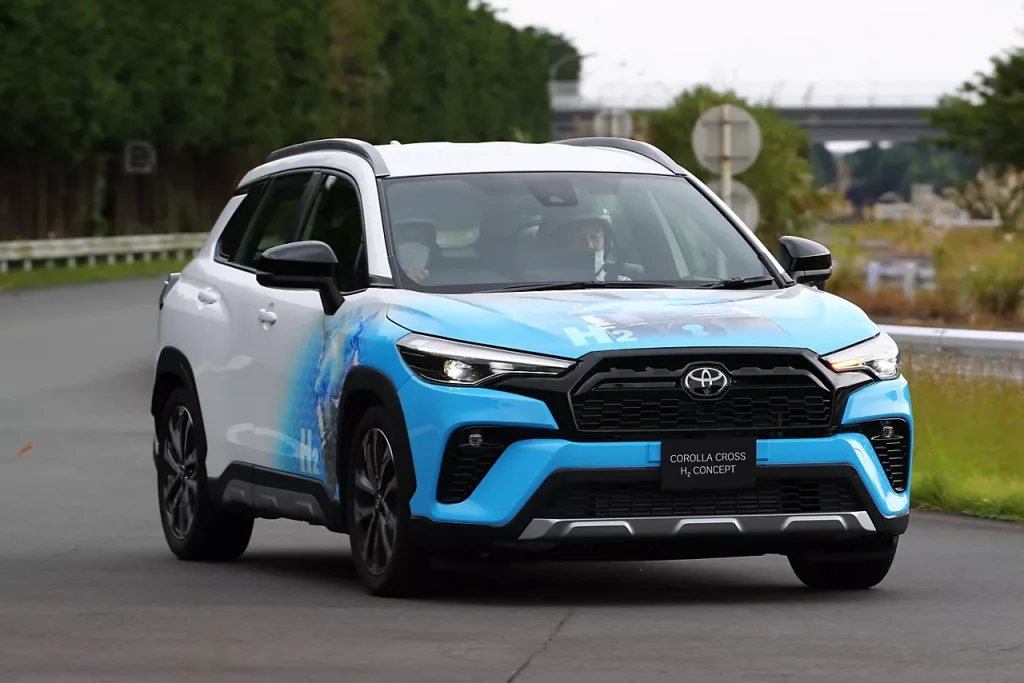
Source: Toyota
Speaking of the working principles of both hydrogen fuel cells and hydrogen combustion, while the names may carry some similarities, the working is substantially different. A hydrogen fuel cell vehicle uses a fuel cell incorporating a negative electrode, a positive electrode and an electrolyte. A catalyst at the anode separates the hydrogen molecules into protons and electrons, which go to different paths, thus creating a flow of electricity. Unlike other propulsion systems, the emission from an FCEV is water, which gets dispersed from a tailpipe. The electric energy produced by the fuel cell gets stored in a battery pack, which then powers the electric motors.
The hydrogen combustion engine, on the other hand, combusts hydrogen to generate power. This enables carmakers to reduce costs by eliminating fuel cells, electric motors and battery packs. However, it also carries its own set of challenges, stopping its mass-market acceptance. Unlike hydrogen fuel cell vehicles whose only emission is water, hydrogen combustion engines emit NOx, which could require emission control equipment.
In addition, hydrogen fuel in general takes substantially more volume to store compared to other fuels like gasoline and diesel and its procurement is also not efficient at this point. With that being said, carmakers like Toyota are betting high on hydrogen — both fuel cell and internal combustion — and aim to commercialise these fuel-type vehicles feasibly for the end consumers.
Synthetic fuels
By definition, synthetic fuels, which are also known as e-fuels, are no different from regular petrol, diesel or kerosene fuels. The difference comes in the manufacturing process, which doesn’t require any fossil fuel. Since the properties of e-fuels are similar to those of regular fuels, they emit the same quantity of carbon. However, the production of e-fuels uses captured carbon dioxide or carbon monoxide and hydrogen obtained from sustainable sources like wind, solar or nuclear power. Hence, the carbon emitted by the combustion of e-fueled engines gets offset with the clever and renewable production method.
The motivation behind the development of e-fuels is to not only benefit the new cars running out from the factories but also reduce the carbon footprint of cars already plying on roads. Given the widespread usage of e-fuels, the carbon footprint of both new and old cars will see a drastic drop, without investing in new machinery or more advanced technologies.
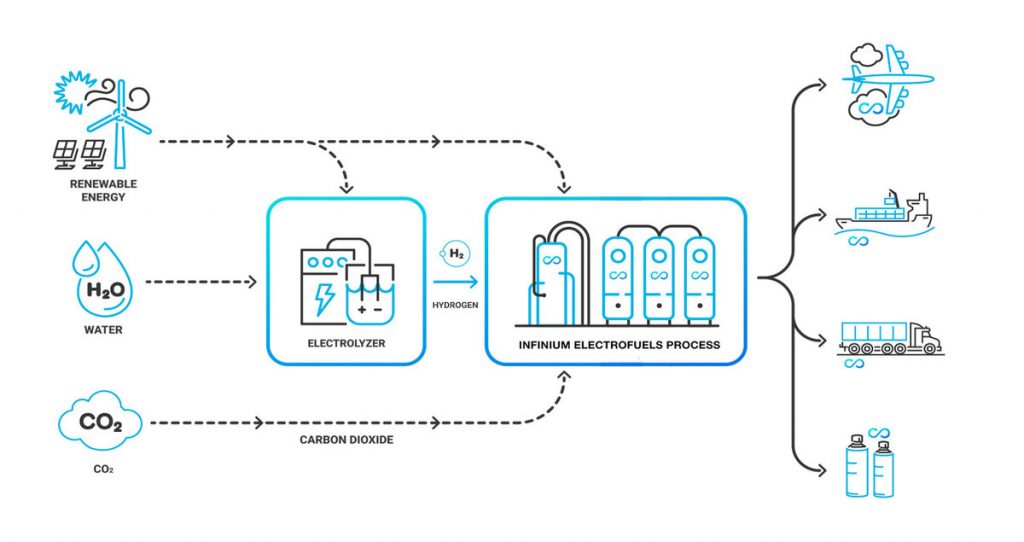
Source: Spectra
Porsche, a brand that has been actively participating in the early development of e-fuels, simplifies the production of e-fuels. Unlike petrol and diesel fuels which are the refined products of fossil fuels, e-fuels only use 2 raw materials — hydrogen and carbon dioxide — both of which are available in plenty.
Speaking of the manufacturing process, hydrogen is generated via electrolysis, which involves passing a direct current through water. The produced hydrogen is split off and collected at the negative pole (cathode). Carbon dioxide, on the other hand, is sourced directly from the atmosphere using a process called direct air capture. Large fans blow air through filters in which the carbon dioxide contained in the atmosphere is deposited.
Moving on, both the procured hydrogen and carbon dioxide then go through the Methanol synthesis, which causes the H2 and CO2 to react and produce eMethanol (CH3OH), which then goes through Methelone to Gasolin (MtG) synthesis and is converted into synthetic petrol. The key here is renewable energy, which is used throughout the production of e-fuels. Porsche’s Haru Oni Pilor project plant located in the Magallanes Province of southern Chile takes advantage of the region’s ideal conditions for generating wind energy. The plant uses a wind turbine operating at full load for an average of 270 days per year.
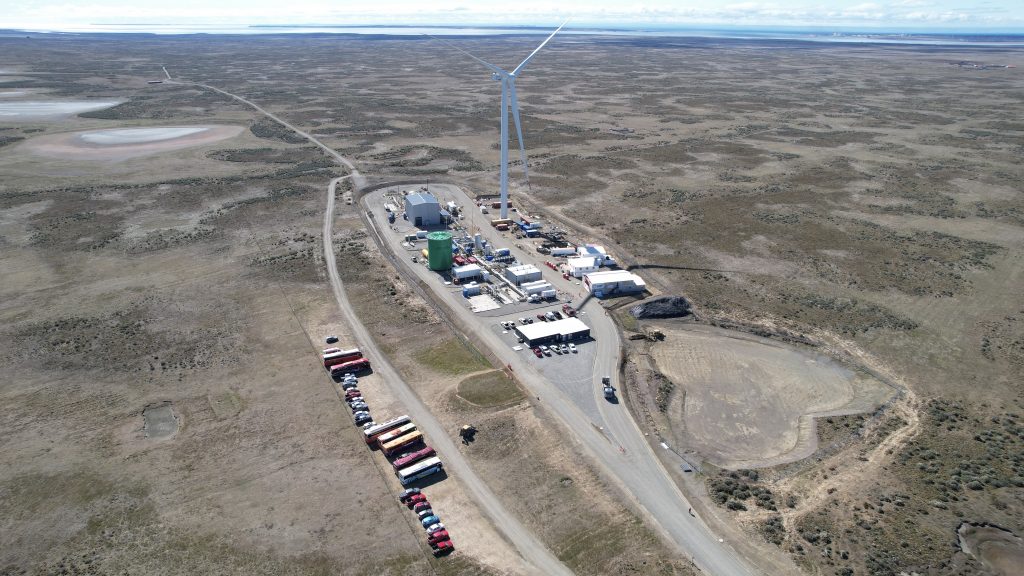
Source: Porsche
However, Porsche is at the early stage of development for e-fuel and its production is in limited quantity, resulting in exorbitant prices. Other companies are also showing interest in e-fuels and are willing to play their part in the production. Earlier this month, Aramco and ENOWA announced to development first-of-its-kind e-fuel production plant. The development plan will begin to produce 35 barrels of low-carbon, synthetic gasoline from renewable-based hydrogen and captured carbon dioxide (CO2) every day.
However, 35 barrels per day sounds miniscule when you account for the per day usage of gasoline barrels in the US, which stands at approximately 8.81 million barrels. Hence, it is safe to assume that we are far away from the mass adoption of e-fuels, which could cater to global consumption.
Ammonia
Another emerging carbon-zero fuel, alongside hydrogen, is ammonia. Used as a fertiliser in farming, ammonia is now gaining traction for automotive use. Compared to hydrogen, ammonia is easier to store and much more energy efficient. Since ammonia doesn’t contain carbon, it doesn’t emit carbon dioxide, carbon monoxide, hydrocarbons or soot.
By now, you must be assuming if it carries such advantages over hydrogen and doesn’t emit carbon, what’s stopping it from taking over fossil fuels? Well, ammonia is a toxic substance and carries its own set of challenges that are supposed to be dealt with before the mass adoption in ICE passenger vehicles.
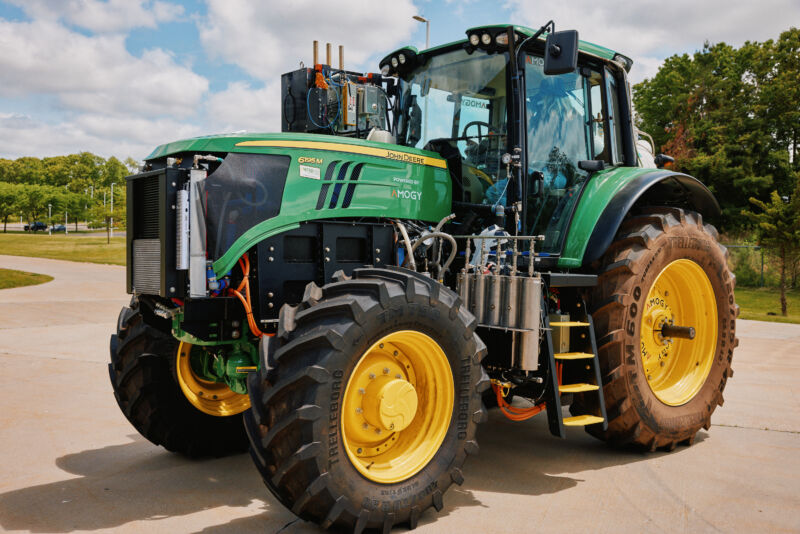
Source: Arstechnia
There are already working examples of ammonia-driven commercial vehicle prototypes, like the John Deere tractor. However, the John Deere tractor uses ammonia to produce hydrogen which then goes via a fuel cell to generate electricity and that’s far away from getting main steam.
In the passenger vehicle scheme of things, Toyota announced its first ammonia-powered 2.0L engine which doesn’t emit any carbon emissions. Toyota partnered with GAC Motor — which is Toyota’s alliance partner in China — to develop the engine, which claims to run on liquid Ammonia and reduce carbon emissions by 90%.
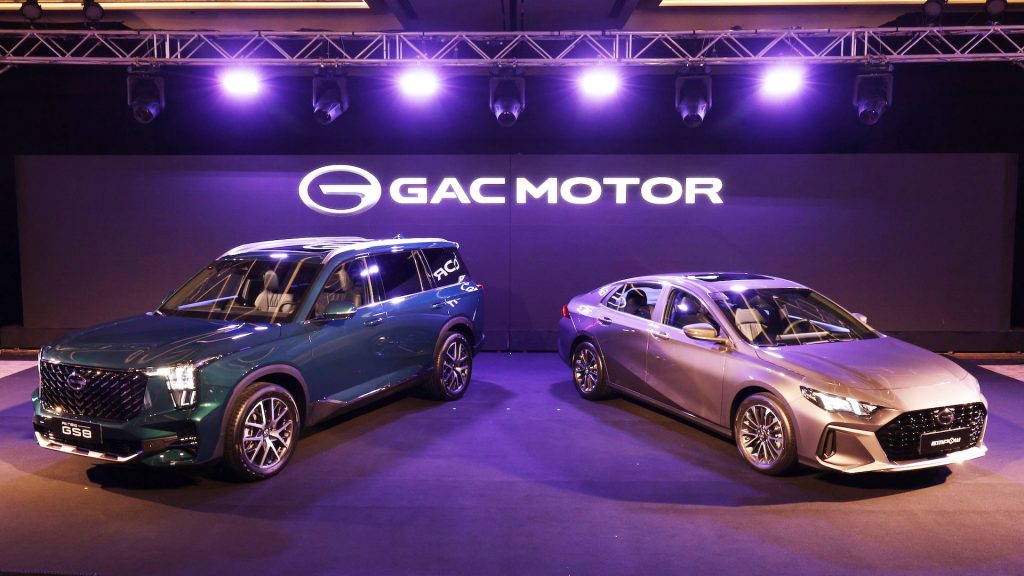
The biggest concern for ammonia as a fuel is the high amount of nitrogen released into the environment, which could have an adverse effect on the environment. GAC Motor is said to have mitigated this issue thanks to the high cylinder pressure. Nonetheless, ammonia fuel has other challenges like slow burning, low energy density and higher freezing point. Apart from GAC Motor, hardly any other carmaker is actively developing ammonia-powered ICE engines, thus questioning its long-term feasibility as a sustainable fuel.
If you have made it till here, you would have realised that automakers and fuel companies are exploring multiple alternative fuels to achieve carbon neutrality, while keeping the internal combustion engines alive. Electric vehicles currently seem to be the most feasible mobility solution, but their benefits start to fade away when it comes to the commercial sector. That’s where alternative fuels could play a crucial role, extending the quick refill of fuel, load bearing and long-range driving capabilities.

